In recent years, robot-assisted technology has gradually been applied more and more in urological surgeries, making it possible to perform more precise and complex operations.
The Da Vinci Surgical System integrates three main features: 3D high-definition vision, wristed surgical instruments, and intuitive motion control, allowing surgeons to apply minimally invasive techniques more widely in complex surgical procedures.
Compared to traditional minimally invasive techniques, robotic surgery has multiple advantages:
For the operating surgeon—robotic surgery elevates surgical procedures to a new level in the clinical field.
In terms of precision—the magnification of the surgical field can exceed 10 times, providing the lead surgeon with a 3D high-definition image of the patient’s body cavity, making even the smallest blood vessels clearly visible. At the same time, the surgical instruments can simulate the flexible operation of the human wrist, filtering out unnecessary tremors and surpassing the precision of human hands.
Recently, Professor Wen’s medical team applied the Da Vinci robotic system, combined with new laparoscopic techniques and other technologies, to perform a series of surgeries, providing higher quality and more minimally invasive services.
[Prostate Cancer Surgery Case Introduction]:


Patients who have undergone TURP surgery may face increased difficulty in prostate radical resection due to: 1. Local pelvic edema and adhesion with prostate tissue; 2. Scar formation at the bladder neck, obscuring the boundary between the bladder neck and the prostate; 3. Changes in the anatomical structure of the bladder triangle; 4. Adhesions between the prostate capsule and the rectum; 5. Urethral edema, which increases the difficulty of anastomosis between the bladder and urethra after prostate removal.
In this surgery, with the assistance of the Da Vinci robot, laparoscopic dissection techniques were used to carefully identify the anatomical structures, accurately separate the bladder neck, remove the prostate and tumor, and finally properly anastomose the bladder neck and urethra.
Performing prostate radical resection with a robot, compared to traditional open surgery or laparoscopic surgery, results in less intraoperative bleeding and has advantages in the recovery of urinary control and erectile function post-surgery. The advantages of robotic prostatectomy are primarily reflected in the following aspects: 1) Stereoscopic vision, with 3D visual magnification of 10-15 times, which better protects the surrounding pelvic nerves and blood vessels, making surgical operations more precise while minimizing trauma; 2) Automatic filtering of hand tremors; 3) The robotic arm is more flexible than the laparoscope, allowing operation at large angles around the prostate; 4) Less intraoperative bleeding, lighter postoperative pain, and shorter hospital stays; 5) A shorter learning curve compared to laparoscopic surgery.
During the surgery, precise separation and removal of the prostate were performed, aiming to maintain negative margins and reduce complications; accurately identifying the location of the prostate cancer apex, paying attention to the protection of the patient’s sphincter, minimizing damage to the sphincter, preserving related nerves and blood vessels, achieving tumor control, and urinary control post-surgery.
[Bladder Cancer Surgery Case Introduction]:
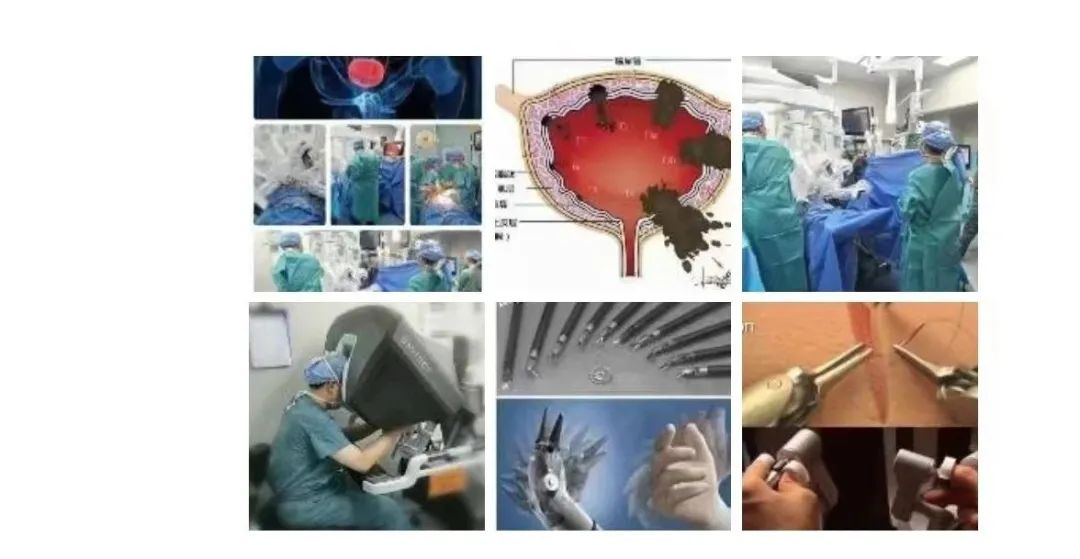
Radical cystectomy is one of the complex and high-difficulty surgeries in urology, involving complicated steps. To eradicate the tumor, it usually requires not only the removal of the bladder but also, depending on the situation, the removal of the prostate or uterus, cleaning both sides of the pelvic lymph nodes, and finally segmenting the intestine to create either a new bladder or an output tract, ensuring no urinary leakage. This procedure is time-consuming and requires high technical skill. We strive to provide patients with meticulous operations and precise anastomoses, ultimately achieving smooth postoperative recovery.
[Adrenal Tumor Renal Cancer Radical Surgery Case Introduction]:
[Kidney Tumor Nephron-Sparing Surgery Case Introduction]:
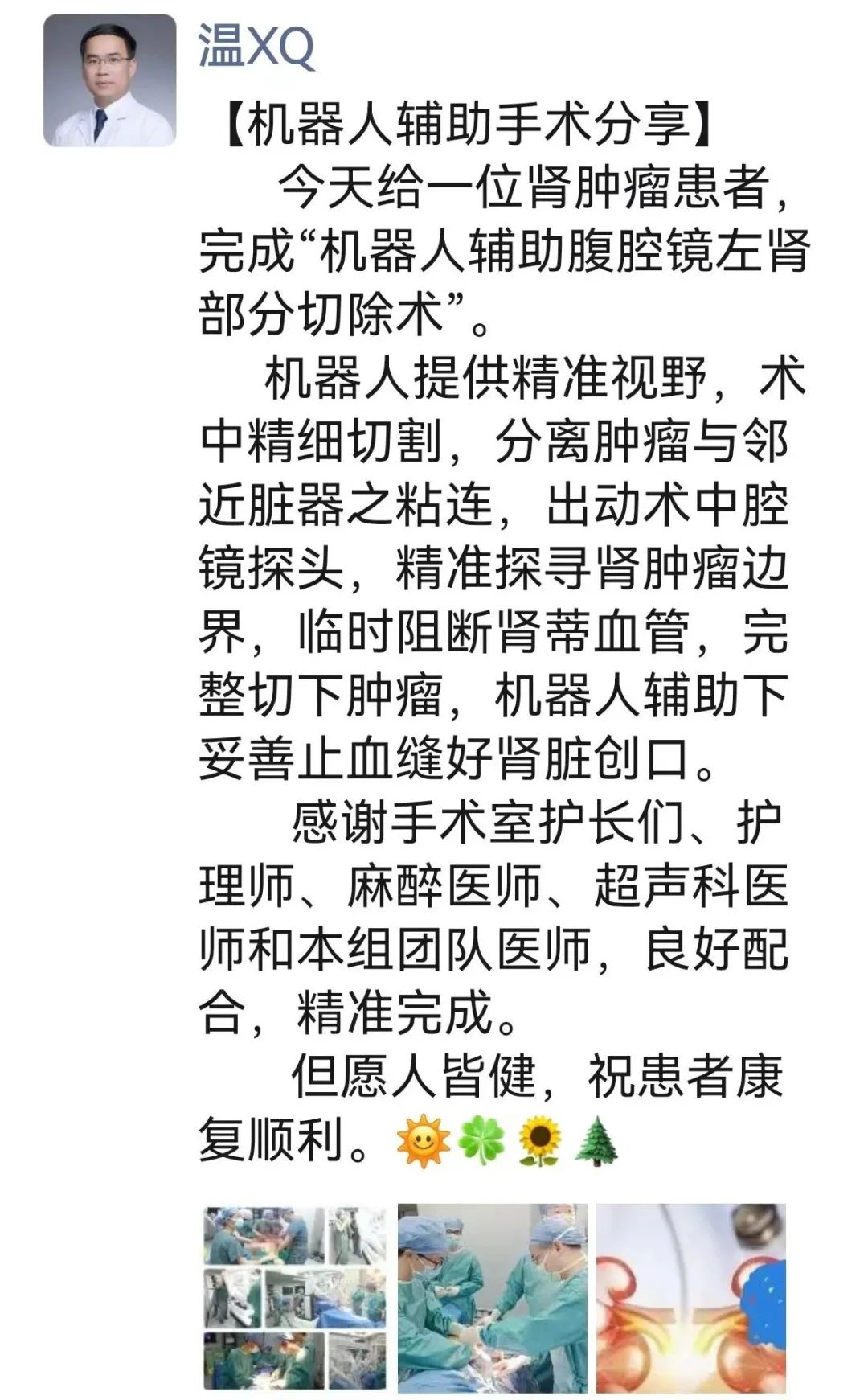

Renal cancer also known as renal cell carcinoma, is the most common malignant tumor of the adult kidney, accounting for about 2%-3% of adult malignant tumors and is one of the common malignant tumors of the urinary system. Early renal cancer lacks specific clinical manifestations, and when symptoms like hematuria, pain, or masses appear, the disease is already in the mid-to-late stage. The preferred treatment method is radical nephrectomy.
With the rapid development of tumor imaging, especially with the continuous advancement of multi-slice spiral CT, the early detection and accurate diagnosis rates of renal cancer have significantly improved. Currently, surgical resection remains the only effective means for localized RCC and is considered the gold standard for treating renal cancer.
Nephron-sparing surgery (NSS) is a surgical approach for treating renal cancer, characterized by maximizing the preservation of functional renal units. It includes partial nephrectomy, wedge resection, and tumor enucleation.
With Vincenz Czerny being the first to apply partial nephrectomy in the treatment of renal tumors, Vermooten established the concept of modern NSS.
With the development of renal warm ischemia interruption techniques, cold ischemia interruption techniques, and early renal cancer detection technologies, significant progress has been made in the application of renal partial nephrectomy.
In recent years, NSS technology has gradually matured, and its clinical efficacy has been recognized, allowing partial nephrectomy to preserve renal units to the greatest extent while treating tumors.
[Adrenal Tumor Resection Surgery Case Introduction]:
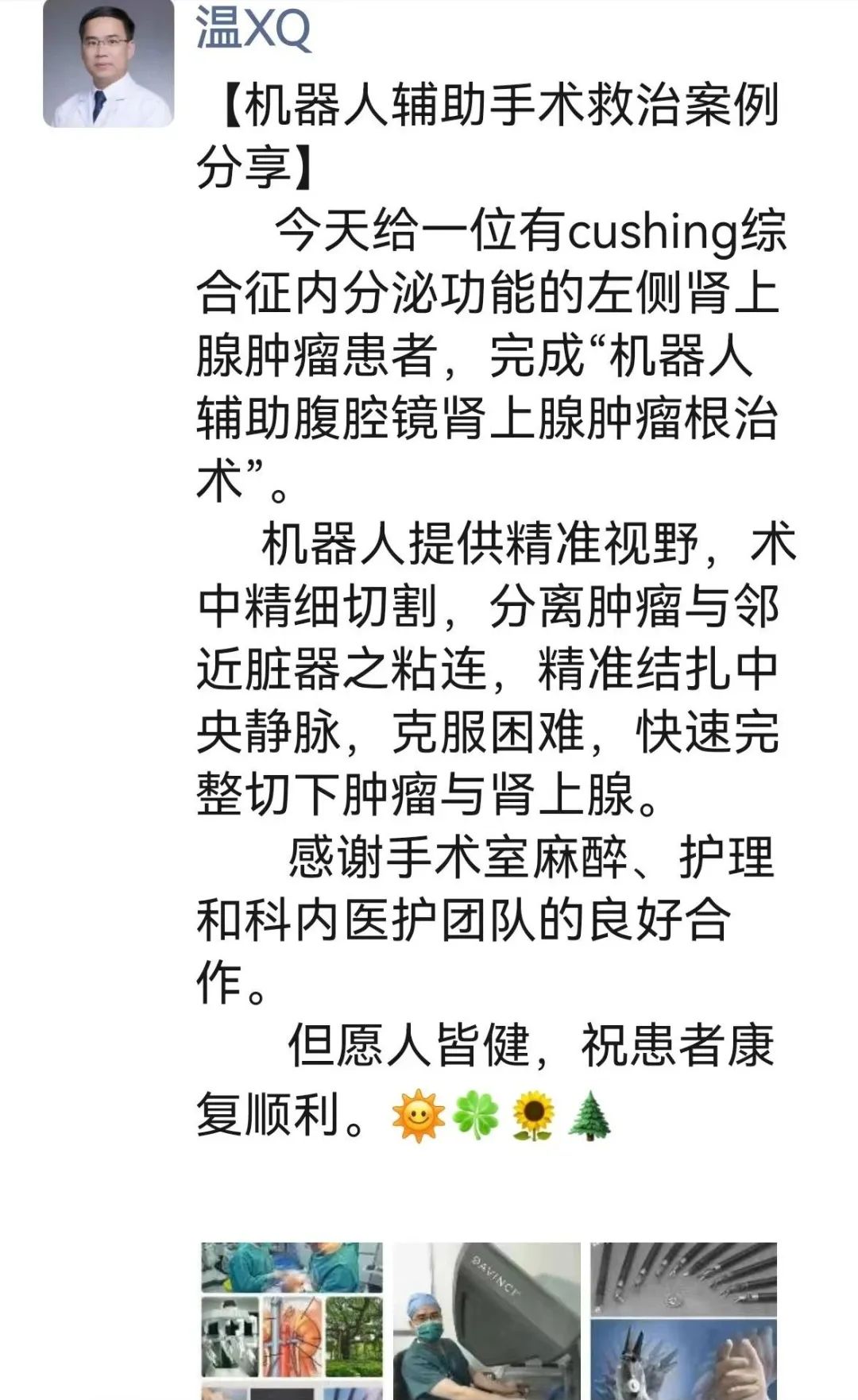

Cushing’s syndrome (Cushing syndrome) refers to a group of symptoms caused by excessive secretion of glucocorticoids (mainly cortisol) from the adrenal glands due to various causes, the most common being the clinical type caused by excessive secretion of adrenocorticotropic hormone (ACTH) from the pituitary gland, known as Cushing’s disease.
The causes of Cushing’s syndrome are classified as follows, requiring scientific differentiation:
1. ACTH-dependent Cushing’s syndrome includes: ① Cushing’s disease: refers to excessive secretion of ACTH from the pituitary gland, accompanied by adrenal cortical hyperplasia. The pituitary gland often has microadenomas, a few have large adenomas, and some cases do not reveal tumors; ② Ectopic ACTH syndrome: tumors outside the pituitary gland secrete large amounts of ACTH, accompanied by adrenal cortical hyperplasia.
2. ACTH-independent syndromes include: ① adrenal cortical adenoma; ② adrenal cortical carcinoma; ③ ACTH-independent bilateral adrenal nodular hyperplasia, which may or may not accompany Carney syndrome; ④ ACTH-independent bilateral adrenal massive nodular hyperplasia.
Adrenal cortical adenoma: is more common in adults, with adenomas typically round or oval, mostly 3-4 cm in diameter, with intact capsules. The onset is relatively slow, with moderate severity, and manifestations of hirsutism and increased androgen are rare. Using laparoscopic or robot-assisted laparoscopic techniques, tumor resection is effective.
The fourth generation Da Vinci surgical robot is an advanced tool for minimally invasive surgery, combining cutting-edge robotic 3D stereoscopic vision and intuitive human-machine interface control, becoming a natural extension of the surgeon’s eyes and hands; sitting at the ergonomically designed Da Vinci console, surgeons have a 3D high-definition view of the surgical field, with magnification greater than 10 times that of the human eye, significantly increasing surgical precision and achieving better surgical outcomes. It is lighter and more convenient than traditional laparoscopic or previous surgical robots; it can also perform single-port laparoscopic surgery. Recently, domestically developed robotic systems have been successfully developed and gradually applied in clinical practice.
[Surgeon Introduction]:
Professor Wen Xingqiao, a Level 2 Chief Physician at the Third Affiliated Hospital of Sun Yat-sen University, Professor of Urology, doctoral supervisor, and postdoctoral cooperation mentor, is the Party Branch Secretary of the Urology Department and the director of the Prostate Disease Specialty.
Selected as an excellent talent of the New Century by the Ministry of Education, outstanding young medical talent in Guangdong Province, and part of the excellent youth training program at Sun Yat-sen University; he has conducted research visits at Harvard University and the University of Rochester in the United States.
Vice Chairman of the Laser Group of the Urological Surgery Branch of the Chinese Medical Association, Chairman of the Precision Medicine Branch of the Guangdong Urological and Reproductive Association, standing committee member of the Urological and Reproductive Medicine Committee of the China Medical Promotion Association, standing committee member of the Urological Surgery Branch of the Guangdong Medical Association, standing committee member of the Urological Surgery Branch of the Guangdong Association of Integrated Traditional Chinese and Western Medicine, and Vice Chairman of the Fertility Preservation Society of the Guangdong Precision Medicine Application Association. He is an international member of the American Urological Association and the International Alliance of Urolithiasis.
Appointed as a reviewer for key, general, and youth projects of the National Natural Science Foundation, a reviewer for doctoral dissertations of the Ministry of Education, a reviewer for senior professional titles in Guangdong’s healthcare system, and a reviewer for multiple provincial and municipal science and technology projects. He serves as a reviewer for several international and domestic journals and has participated in international academic conferences to present and exchange research. He has contributed to writing several chapters of the CUA guidelines.
Research on prostate cancer has received multiple grants from the National Natural Science Foundation and Guangdong Province’s science and technology projects, with over 40 SCI papers published as the first author and corresponding author in international academic journals, over 90 papers published in Chinese, and has participated in winning the first prize for science and technology in Guangdong Province and the second prize for scientific and technological progress from the Ministry of Education.
Specializes in minimally invasive surgery and comprehensive treatment for urological diseases such as prostate tumors, benign prostatic hyperplasia, urinary stones, renal tumors, bladder tumors, ureteral tumors, and various urinary stone diseases.
Conducts Da Vinci robot laparoscopic radical prostatectomy for prostate cancer, as well as robotic surgeries for other urological organs, single-port laparoscopic surgeries, and gasless laparoscopic surgeries, along with other minimally invasive surgeries.
Leads multiple projects funded by the National Natural Science Foundation and provincial key projects, and is the chief editor of “Daily Laparoscopic Surgery Steps and Atlas” and “New Laparoscopic Surgery Steps and Atlas”. He has been invited to participate in international academic conferences multiple times to present papers or reports; at the Oriental International Urological Surgery Week, Boao Surgery Week, and Yixian Urological Tumor Surgery Week, he has live-demonstrated robot-assisted laparoscopic surgeries.
Enthusiastically participates in medical consultations and charitable surgery activities, having conducted free consultations and charitable surgeries in various regions including Hami in Xinjiang, Baise in Guangxi, Dapu in Guangdong, Lianzhou in Guangdong, Lianan Yao Autonomous County, Leizhou in Guangdong, and Longlin Various Nationalities Autonomous County in Guangxi.
Engages in public education on urological diseases, serving as the chief editor of the “Urological Health Knowledge” popular science book, and has been invited multiple times to promote popular science knowledge on Guangdong Radio, Guangzhou Daily, Shenzhen Radio, “Family Doctor”, and various new media platforms.

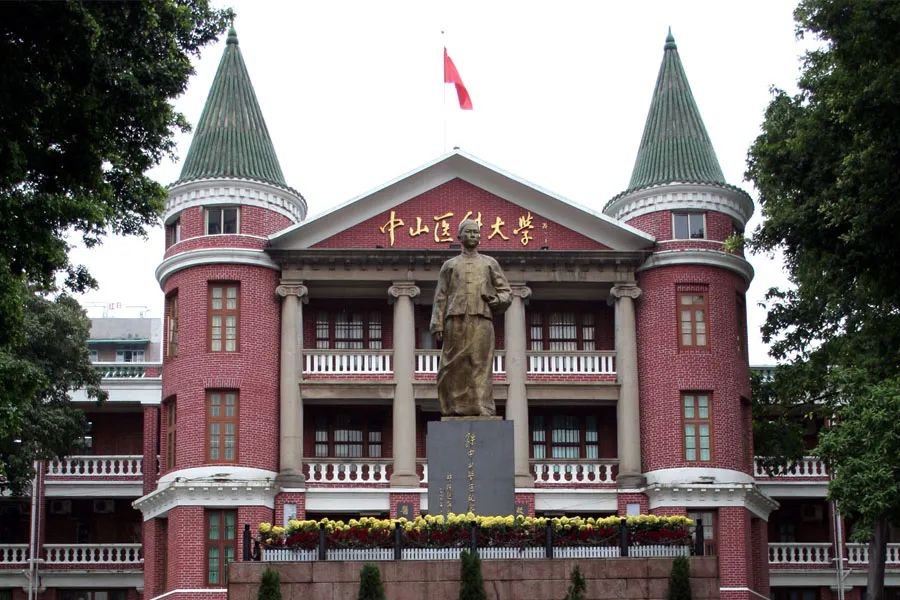
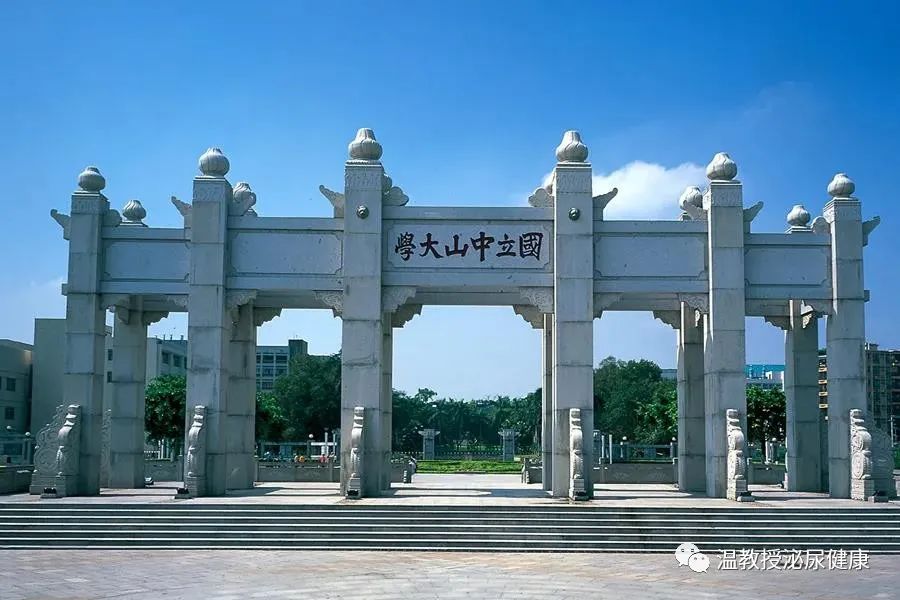
WeChat Appointment Registration with Professor Wen:
Follow the WeChat account “Third Affiliated Hospital of Sun Yat-sen University”–“Hospital Services”–“I Want to Register”–“Tianhe Campus”–“Surgery”–“Urology Clinic”,
Wednesday morning, Friday morning, Professor Wen Xingqiao. (In special circumstances, if there are no available appointments, please meet directly and ask the professor for an extra appointment)
Expert Clinic Hours and Location:
600 Tianhe Road, Tianhe District, Guangzhou, Third Affiliated Hospital of Sun Yat-sen University, Outpatient Building, 2nd Floor, Room 6 or other consultation rooms, Wednesday morning, Friday morning 8:30-11:00
Professor Wen’s Special Clinic:
Special Clinic Center, 4th Floor of the Outpatient Building, Monday afternoon 15:00-16:30
Consultation and Appointment Phone: 020-85253231